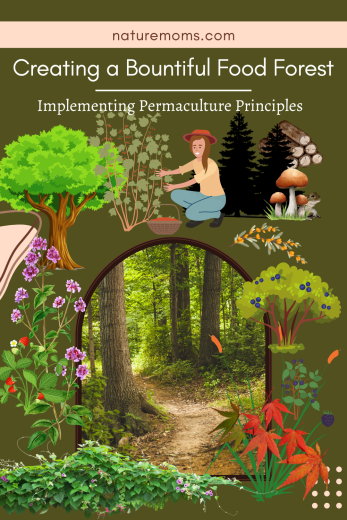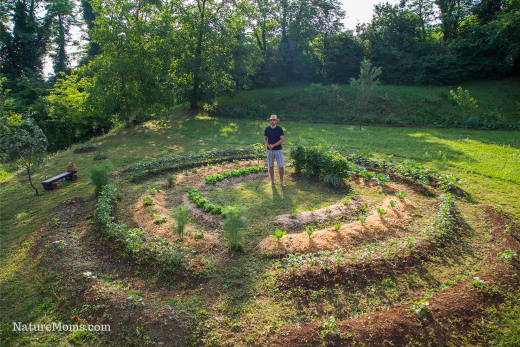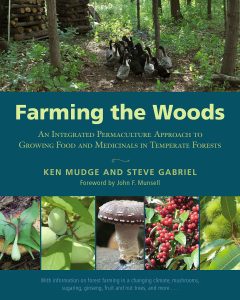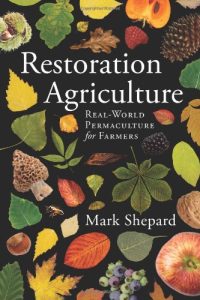 Imagine stepping into a lush and vibrant ecosystem teeming with a variety of edible plants, harmoniously intermingling and supporting each other’s growth. This is the essence of a food forest, a sustainable and self-sufficient agroecosystem designed using permaculture principles. In this article, we will explore the steps to design and implement a food forest, and provide plant suggestions for each layer, ensuring an abundant and diverse harvest. Let’s dive in!
Imagine stepping into a lush and vibrant ecosystem teeming with a variety of edible plants, harmoniously intermingling and supporting each other’s growth. This is the essence of a food forest, a sustainable and self-sufficient agroecosystem designed using permaculture principles. In this article, we will explore the steps to design and implement a food forest, and provide plant suggestions for each layer, ensuring an abundant and diverse harvest. Let’s dive in!
- Understanding Permaculture: Permaculture is a design philosophy that mimics natural ecosystems to create sustainable human habitats. It emphasizes the integration of plants, animals, and natural elements to form functional and productive systems. By applying permaculture principles to food forests, we can create resilient and productive landscapes.
- Analyzing the Site: Before designing your food forest, assess the site’s characteristics such as climate, soil quality, and available resources. This analysis will help determine suitable plant selections for your food forest.
- Canopy Layer: The canopy layer consists of large fruit and nut trees that provide shade and act as the backbone of the food forest. Consider planting apple, pear, cherry, or pecan trees for a diverse and productive canopy layer.
- Understory Layer: Beneath the canopy, the understory layer thrives. Include fruiting shrubs like blueberries, currants, and gooseberries. Edible vines such as grapes and passionfruit can also be integrated to make the most of vertical space.
- Herbaceous Layer: The herbaceous layer comprises perennial herbs, vegetables, and groundcovers. Plant culinary herbs like rosemary, thyme, and mint, as well as edible leafy greens like kale and spinach. Groundcovers such as strawberries and oregano help suppress weeds.
- Ground Layer: The ground layer consists of root crops and low-growing plants. Include potatoes, sweet potatoes, and groundnut to maximize the use of space. Complement these with edible mushrooms, like oyster mushrooms, which can be grown on logs or in dedicated patches.
- Rhizosphere Layer: The rhizosphere layer focuses on plants with deep taproots that break up compacted soil and draw nutrients from deeper layers. Consider planting comfrey and dandelion, which have deep roots and provide dynamic accumulators of nutrients.
- Vertical Layer: Vertical elements, such as trellises and arbors, allow for the growth of climbing plants. Integrate edible climbers like beans, cucumbers, and kiwi vines to add vertical diversity and optimize space utilization.
- Edge Zone: The edge zone forms the boundary between the food forest and its surroundings. Plant beneficial insect-attracting flowers like marigolds and sunflowers. Include aromatic plants such as lavender and chamomile to attract pollinators.
- Guilds and Companion Planting: Create plant guilds by interplanting compatible species. For example, pairing legumes with fruit trees allows nitrogen fixation and enhances tree growth. Consider companion planting combinations like tomatoes and basil, or carrots and onions.
- Mulching and Composting: Apply mulch to suppress weeds, retain moisture, and enhance soil fertility. Composting kitchen scraps and garden waste provides nutrient-rich organic matter for the food forest.
- Water Management: Design water catchment systems like swales and ponds to maximize water retention. Consider installing drip irrigation to ensure efficient water distribution throughout the food forest.
- Maintenance and Succession: Regularly maintain the food forest by pruning, mulching, and observing plant health. Additionally, plan for succession by introducing new plants to maintain productivity as older plants decline.
Designing and implementing a food forest based on permaculture principles offers a sustainable and regenerative approach to food production. By carefully selecting plants for each layer, incorporating edible varieties, and implementing efficient practices like mulching and water management, your food forest can flourish into a thriving ecosystem. Embrace the beauty of diversity and enjoy the abundance that nature has to offer.





